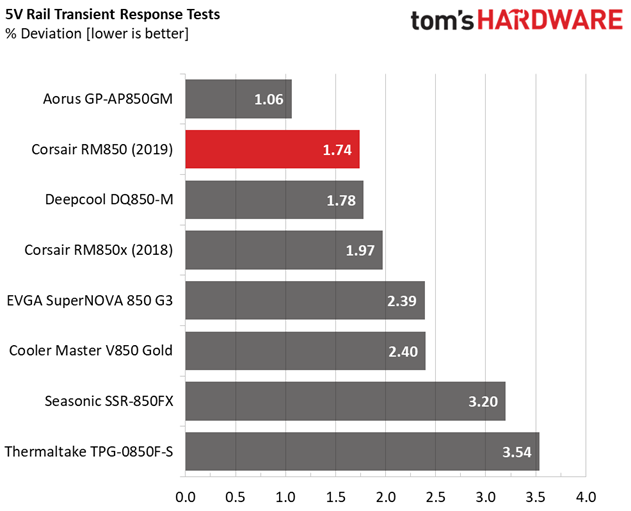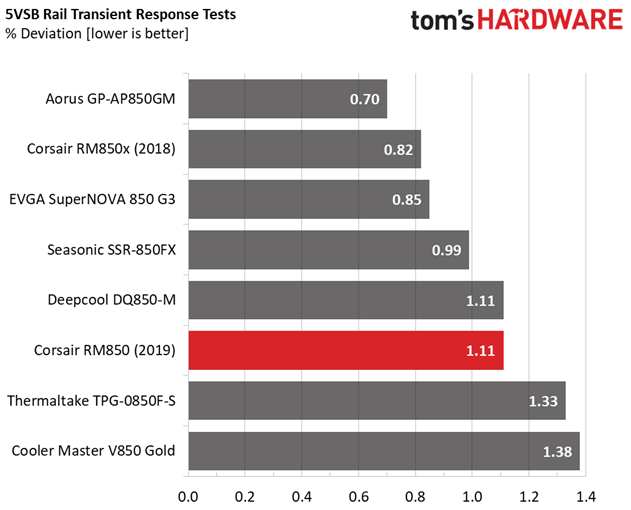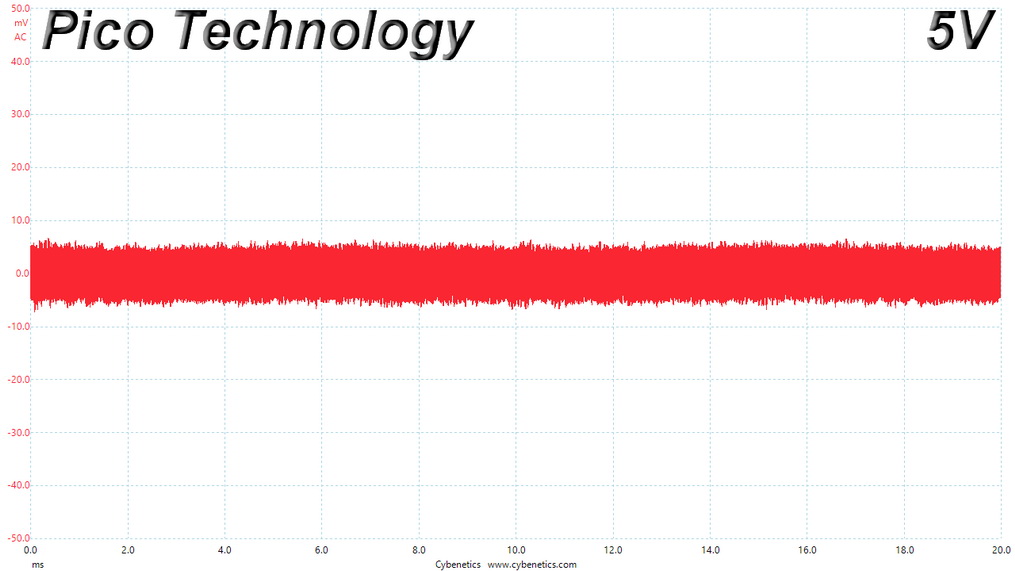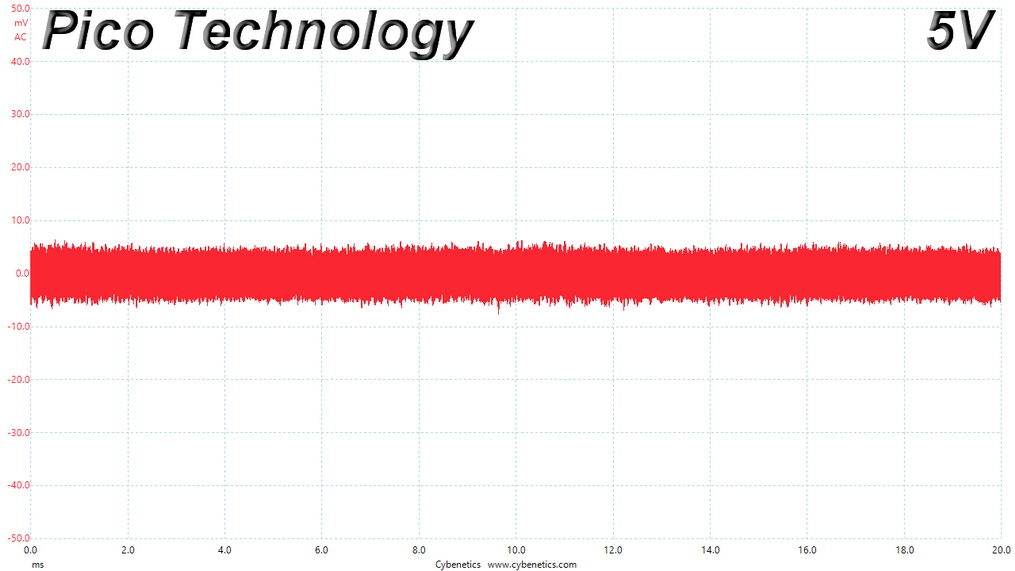Corsair RM850 Power Supply Review: A Solid Value
Why you can trust Tom's Hardware
Transient Response Tests, Ripple Measurements and EMC Pre-Compliance Testing
Advanced Transient Response Tests
For details about our transient response testing, please click here.
In the real world, power supplies are always working with loads that change. It's of immense importance, then, for the PSU to keep its rails within the ATX specification's defined ranges. The smaller the deviations, the more stable your PC will be with less stress applied to its components.
We should note that the ATX spec requires capacitive loading during the transient rests, but in our methodology, we also choose to apply a worst case scenario with no extra capacitance on the rails.
Advanced Transient Response at 20% – 200ms
| Voltage | Before | After | Change | Pass/Fail |
|---|---|---|---|---|
| 12V | 12.090V | 11.963V | 1.05% | Pass |
| 5V | 5.039V | 4.954V | 1.69% | Pass |
| 3.3V | 3.311V | 3.166V | 4.38% | Pass |
| 5VSB | 5.018V | 4.964V | 1.08% | Pass |
Advanced Transient Response at 20% – 20ms
| Voltage | Before | After | Change | Pass/Fail |
|---|---|---|---|---|
| 12V | 12.090V | 11.924V | 1.37% | Pass |
| 5V | 5.039V | 4.941V | 1.94% | Pass |
| 3.3V | 3.311V | 3.133V | 5.38% | Fail |
| 5VSB | 5.018V | 4.958V | 1.20% | Pass |
Advanced Transient Response at 20% – 1ms
| Voltage | Before | After | Change | Pass/Fail |
|---|---|---|---|---|
| 12V | 12.088V | 11.902V | 1.54% | Pass |
| 5V | 5.039V | 4.941V | 1.94% | Pass |
| 3.3V | 3.311V | 3.138V | 5.23% | Fail |
| 5VSB | 5.018V | 4.901V | 2.33% | Pass |
Advanced Transient Response at 50% – 200ms
| Voltage | Before | After | Change | Pass/Fail |
|---|---|---|---|---|
| 12V | 12.043V | 11.963V | 0.66% | Pass |
| 5V | 5.026V | 4.936V | 1.79% | Pass |
| 3.3V | 3.305V | 3.152V | 4.63% | Pass |
| 5VSB | 4.996V | 4.939V | 1.14% | Pass |
Advanced Transient Response at 50% – 20ms
| Voltage | Before | After | Change | Pass/Fail |
|---|---|---|---|---|
| 12V | 12.043V | 11.931V | 0.93% | Pass |
| 5V | 5.026V | 4.925V | 2.01% | Pass |
| 3.3V | 3.305V | 3.120V | 5.60% | Fail |
| 5VSB | 4.996V | 4.920V | 1.52% | Pass |
Advanced Transient Response at 50% – 1ms
| Voltage | Before | After | Change | Pass/Fail |
|---|---|---|---|---|
| 12V | 12.041V | 11.943V | 0.81% | Pass |
| 5V | 5.026V | 4.918V | 2.15% | Pass |
| 3.3V | 3.305V | 3.119V | 5.63% | Fail |
| 5VSB | 4.996V | 4.927V | 1.38% | Pass |








The transient response of the +12V rail is satisfactory and the same applies to the 5V and 5VSB rails. On the contrary, there is (a lot of) room for improvement on the 3.3V rail, which failed in most tests.
Turn-On Transient Tests
In the next set of tests, we measure the PSU's response in simpler transient load scenarios—during its power-on phase. Ideally, we don't want to see any voltage overshoots or spikes since those put a lot of stress on the DC-DC converters of installed components.



Comments
Ripple Measurements
Ripple represents the AC fluctuations (periodic) and noise (random) found in the PSU's DC rails. This phenomenon significantly decreases the capacitors' lifespan because it causes them to run hotter. A 10-degree Celsius increase can cut into a cap's useful life by 50%. Ripple also plays an important role in overall system stability, especially when overclocking is involved.
Get Tom's Hardware's best news and in-depth reviews, straight to your inbox.
The ripple limits, according to the ATX specification, are 120mV (+12V) and 50mV (5V, 3.3V, and 5VSB).
| Test | 12V | 5V | 3.3V | 5VSB | Pass/Fail |
|---|---|---|---|---|---|
| 10% Load | 4.9 mV | 6.4 mV | 9.1 mV | 7.2 mV | Pass |
| 20% Load | 10.6 mV | 7.2 mV | 11.2 mV | 8.2 mV | Pass |
| 30% Load | 7.6 mV | 8.1 mV | 11.3 mV | 8.3 mV | Pass |
| 40% Load | 9.3 mV | 9.4 mV | 11.6 mV | 8.4 mV | Pass |
| 50% Load | 9.1 mV | 9.3 mV | 11.6 mV | 8.0 mV | Pass |
| 60% Load | 9.6 mV | 10.4 mV | 13.2 mV | 8.4 mV | Pass |
| 70% Load | 10.6 mV | 11.2 mV | 13.9 mV | 8.5 mV | Pass |
| 80% Load | 11.7 mV | 11.6 mV | 15.1 mV | 9.3 mV | Pass |
| 90% Load | 12.5 mV | 12.5 mV | 16.6 mV | 8.7 mV | Pass |
| 100% Load | 16.8 mV | 14.8 mV | 16.6 mV | 11.0 mV | Pass |
| 110% Load | 17.8 mV | 14.5 mV | 18.6 mV | 11.0 mV | Pass |
| Crossload 1 | 18.8 mV | 10.7 mV | 16.6 mV | 8.9 mV | Pass |
| Crossload 2 | 17.8 mV | 11.4 mV | 15.5 mV | 10.2 mV | Pass |




The ripple suppression might not be at the perfect levels that the RM850x achieves, because the RM850's modular cables don't use any in-cable caps, but still is very good
Ripple At Full Load




Ripple At 110% Load




Ripple At Cross-Load 1




Ripple At Cross-Load 2




EMC Pre-Compliance Testing – Average & Peak EMI Detector Results
Electromagnetic Compatibility (EMC) is the ability of a device to operate properly in its environment without disrupting the proper operation of other close-by devices.
Electromagnetic Interference (EMI) stands for the electromagnetic energy a device emits, and it can cause problems in other close-by devices if too high. For example, it can be the cause of increased static noise in your headphones or/and speakers.
The conducted EMI emissions are low, throughout the entire frequency range that we measured (150KHz - 30MHz).
MORE: Best Power Supplies
MORE: How We Test Power Supplies
MORE: All Power Supply Content
Current page: Transient Response Tests, Ripple Measurements and EMC Pre-Compliance Testing
Prev Page Protection Features, DC Power Sequencing, Cross-Load Tests and Infrared Images Next Page Performance, Noise and Efficiency
Aris Mpitziopoulos is a contributing editor at Tom's Hardware, covering PSUs.
